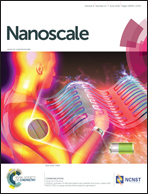Slider thickness promotes lubricity: from 2D islands to 3D clusters
Abstract
The sliding of three-dimensional clusters and two-dimensional islands adsorbed on crystal surfaces represents an important test case to understand friction. Even for the same material, monoatomic islands and thick clusters will not as a rule exhibit the same friction, but specific differences have not been explored. Through realistic molecular dynamics simulations of the static friction of gold on graphite, an experimentally relevant system, we uncover as a function of gold thickness a progressive drop of static friction from monolayer islands, that are easily pinned, towards clusters, that slide more readily. The main ingredient contributing to this thickness-induced lubricity appears to be the increased effective rigidity of the atomic contact, acting to reduce the cluster interdigitation with the substrate. A second element which plays a role is the lateral contact size, which can accommodate the solitons typical of the incommensurate interface only above a critical contact diameter, which is larger for monolayer islands than for thick clusters. The two effects concur to make clusters more lubric than islands, and large sizes more lubric than smaller ones. These conclusions are expected to be of broader applicability in diverse nanotribological systems, where the role played by static, and dynamic, friction is generally quite important.


 Please wait while we load your content...
Please wait while we load your content...